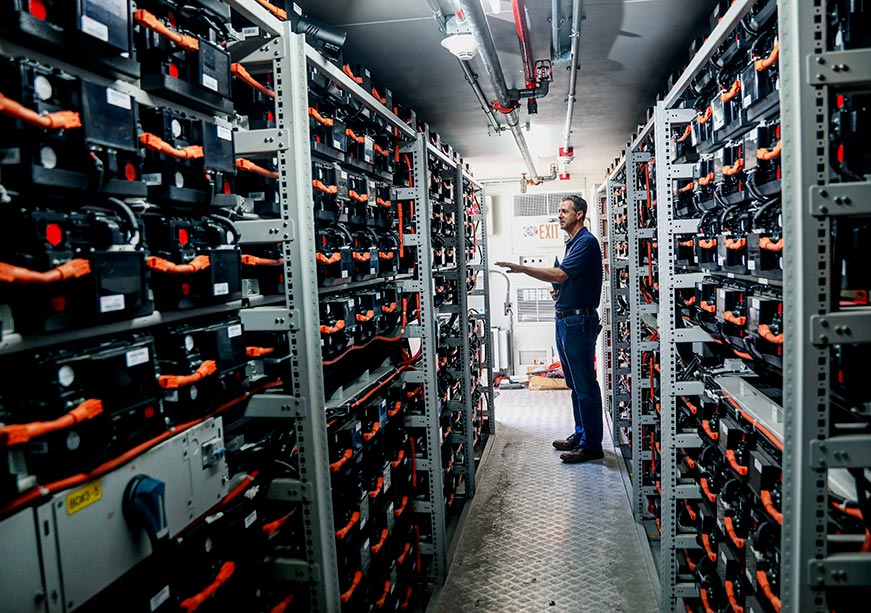
Image Source: Getty
Urbanisation in India is accelerating, with millions of inhabitants migrating from rural to urban areas for better job opportunities, income prospects, and wealth creation. According to India’s Economic Survey 2018, the country’s urban population is estimated to reach 600 million by 2031 and 800 million by 2050. However, rapid urban growth and ill-prepared municipal self-governance pose significant challenges, including inadequate infrastructure, detrimental sustainable development, socioeconomic disparities, and housing shortages, resulting in socially, economically, and environmentally unsustainable situations. It is imperative to understand and manage the shifts in the urban landscape to respond to these challenges improve the quality of life of India’s fast-growing urban populations and equip cities to help ensure India’s sustainable and inclusive development.
Disempowered urbanism: The languishing federal third-tier
The central government provides strategic leadership in guiding urban governance reforms by formulating laws, policies, and programmes. However, the effectiveness of these reforms depends on their implementation by states, which often face hindrances such as weak institutional capacities for urban planning and management, lack of political will, bureaucratic red tape, poor interdepartmental coordination, and financial constraints. Indian cities are not empowered within the centralised framework to confront these challenges. Additionally, mayors and councillors in India have limited power over funds and functionaries, which results in urban local bodies (ULBs) remaining just another civic service agency rather than an empowered local form of self-government. The 74th Constitutional Amendment Act (CAA) 1992 attempted to ensure the improved functioning and abilities of ULBs by transferring a specific set of responsibilities from state governments to ULBs, incorporating public participation in decision-making, and enhancing the skills of ULBs to address the local needs of citizens.
Mayors and councillors in India have limited power over funds and functionaries, which results in urban local bodies (ULBs) remaining just another civic service agency rather than an empowered local form of self-government.
However, the accountability of ULBs is not backed by adequate finances or the capacity for management and planning. For example, India’s total municipal revenues constituted only 1.08 percent of the country’s gross domestic product (GDP) in 2007-08, declining to 1.03 percent in 2012-13, and further to 0.72 percent in 2019-20. In comparison, in 2010, this revenue was 6 percent of the GDP in South Africa, 7.4 percent in Brazil, 13.9 percent in the United Kingdom, and 14.2 percent in Norway. India also lags in ensuring predictability in transfers from state governments to ULBs. According to various reports from the Asian Development Bank, World Bank, and McKinsey Global Institute, developing Asian countries, including India, face massive shortfalls, such as poor capacity of officials; lack of planning, empowerment, accountability, and transparency; and inadequate funding and resource enhancement of local governments.
By 2013, only 11 out of 31 states and union territories (UTs) in India had transferred all 18 functions mandated under Schedule 12 of the 74th CAA to ULBs. Even the Brihanmumbai Municipal Corporation—one of the most prosperous municipalities in India, with an annual budget of nearly INR 600 billion—does not have any independent body to lease land and accumulate revenue independently for land-use regulations. Despite being tasked with managing cities and towns, ULBs in India are not adequately equipped to ensure citizens’ participation, with decentralisation and devolution reforms remaining an unfulfilled agenda. As of 2023, only three out of 35 states and UTs have mandated public consultation on city budgets, whereas only five out of 35 states and UTs have enacted a community participation law for citizen engagement by creating ward committees and area sabhas. A combination of factors, including fragmentation and ambiguity in responsibilities, inadequate staff strength and skills, political priorities, weak transparency, and conflicting statutes, do not allow ULBs to be approachable and responsive to citizens.
A combination of factors, including fragmentation and ambiguity in responsibilities, inadequate staff strength and skills, political priorities, weak transparency, and conflicting statutes, do not allow ULBs to be approachable and responsive to citizens.
The role of the central government
The Government of India can play a pivotal role in empowering local self-governance by ensuring that states implement the 74th CAA in letter and spirit. It is vital to nurture a metamorphosis of ‘urban local bodies’ into ‘urban local self-governments’. Fostering systematic and well-planned urbanisation is paramount to sustain India’s growth trajectory. There is a need to strengthen legal frameworks and accountability mechanisms to ensure the proper implementation and enforcement of model laws and schemes by states. These measures must include a constitutional amendment in existing legislation (for example, the 74th CAA), mobilising financial resources to ULBs, introducing statutes, and establishing authorities that oversee urban governance reforms and monitor compliance. It is also vital to promote the harmonisation of policies and the standardisation of practices across states through model guidelines and toolkits. Such result-oriented action can minimise inter-state inconsistencies and lead to efficient and equitable urban development planning and implementation.
Mayors and city councillors are the bridge between citizens and the government at the ‘first mile’. It is thus imperative to formulate a robust institutional framework for urban local governments through an improved ‘Model Municipal Act’ to impart substantial autonomy to mayors and councillors for effective self-governance. The Government of India has launched flagship programmes such as the 2005 Jawaharlal Nehru National Urban Renewal Mission (JNNURM), mandating states to formulate separate municipal administration cadres. More recently, the Atal Mission for Rejuvenation and Urban Transformation (AMRUT) included the constitution and professionalisation of municipal cadres among its 11 mandated reforms.
Fostering systematic and well-planned urbanisation is paramount to sustain India’s growth trajectory.
Similarly, the Centre should make provisions such as sound council infrastructure through an empowered secretariat, digitisation (including live-streaming of council proceedings), research support ecosystem, and proper compensation for councillors to strengthen the current functioning of the city councils and corporations. The Greater London Authority and its administration[1] is an example. Further, upskilling and reskilling municipal personnel through capacity-building workshops and leadership development programmes can improve their management capacities and governance skills.
The Government of India must also mainstream public participation and transparency in urban governance by encouraging states to adopt participatory decision-making processes, open-data initiatives, and citizen feedback mechanisms. This may include promoting awareness campaigns, capacity-building workshops, and technology-enabled platforms to empower citizens, foster transparency, and enhance accountability in urban governance. For instance, cities such as London, Singapore, New York, Munich, Shanghai, Jakarta, and Tokyo have an ‘open cities’ framework that uses web technologies and user interfaces to enable real-time citizen engagement.
This spatial and data-driven framework can provide a common platform for citizens, mayors, councillors, and municipal officials to communicate with each other. Such a framework can also facilitate the direct engagement of citizens through participatory budgeting and volunteer engagement processes, where people can play an active role in resolving civic issues. It is time the Government of India pushes states to implement best practices, including the Model Community Participation Law (CPL) and Model Public Discourse Law (PDL), first introduced under JNNURM in 2005 and repeatedly urged by subsequent missions and schemes.
The CPL aimed to institutionalise mechanisms for involving local communities in the planning, implementation, and monitoring of urban development projects. The following are notable features of CPL:
- Formation of ward committees comprising representatives from different sections of society, including residents, civil society organisations, NGOs, elected representatives, academics, and urban experts.
- Mandatory participatory governance through the inclusion of local communities, civil society organisations, welfare associations, NGOs, and other stakeholders in the decision-making process for all urban development projects.
- Consultative processes through public hearings and feedback mechanisms to collect community inputs to ensure that their priorities and concerns are incorporated into urban planning.
- Capacity building to empower stakeholders to actively participate in urban governance through workshops and awareness campaigns.
The PDL, meanwhile, was introduced to promote transparency, accountability, and public scrutiny of urban development projects and related decisions. Its key provisions include the following:
- Public consultations through public hearings to enable citizens to express their views, raise concerns, and provide feedback on proposed projects and policies.
- Social audits by independent auditors to assess the impacts of development projects on local communities and their effectiveness in addressing the needs of citizens.
- Disclosure of information on the ULB website and through information centres of planned projects, budgets, expenditures, and decision-making processes.
Conclusion
In the last two decades, the Government of India has made various efforts to pursue urban self-governance reforms. These include passing laws such as the Model Municipal Law, Model Tenancy Act, and Model Building By-Laws; implementing schemes such as JNNURM, AMRUT, and Smart Cities Mission; promoting citizen participation platforms like MyGov, Swachhata, and National e-Governance Plan (NeGP); and creating indices such as the ‘Ease of Living Index’ and the ‘Municipal Performance Index’
State governments must implement the obligations and institutional reforms mandated by the Central Government.
Both the central and state governments must step up efforts at creating pathways for effective urban self-governance. State governments must implement the obligations and institutional reforms mandated by the Central Government. Likewise, the Government of India needs to implement dedicated monitoring mechanisms, regular transparent audits, and performance reviews.
Strengthening Centre-State partnerships is essential to addressing implementation gaps and fostering sustainable and inclusive urban development in Indian cities. Collaboration, coordination, and cooperation among all stakeholders are essential to overcoming challenges, achieving desired outcomes, and enhancing efficiency, effectiveness, and resilience in managing urban areas.
Janak Parmar is a Visiting Research Scholar at the University of Birmingham, United Kingdom and is a PhD Candidate in Territory, Innovation and Sustainability at the University of Niccolò Cusano, Italy
[1] The Greater London Authority Act, 1999 has empowered the mayor of London with several important functionalities, such as setting annual budget, direct negotiation with federal government to avail funds, spatial planning of city, fabricating housing strategies and waste management strategies, appointing officers for functional bodies such as Transport for London (TfL), London Fire and Emergency Planning Authority, among others. The meetings conducted by the mayor and the city assembly are live-streamed and webcasts can be accessed online.
The views expressed above belong to the author(s). ORF research and analyses now available on Telegram! Click here to access our curated content — blogs, longforms and interviews.




 PREV
PREV


